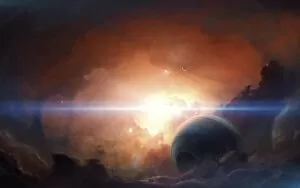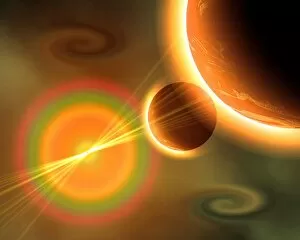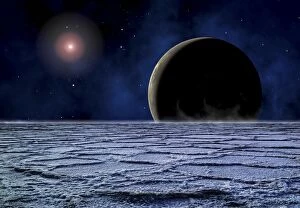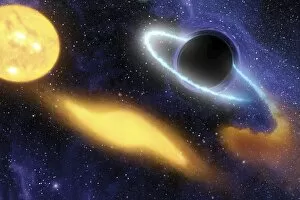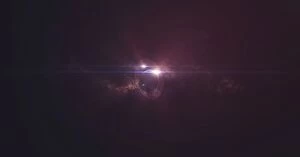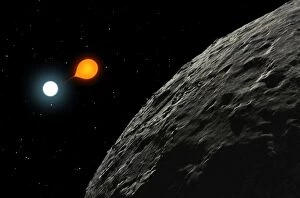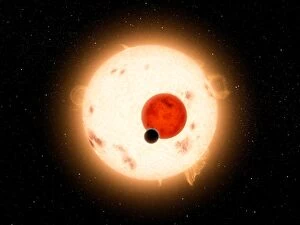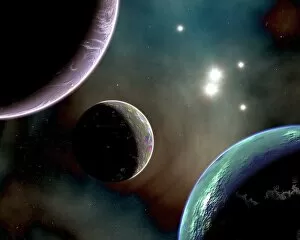Planetary Systems Collection (#4)
"Exploring the Wonders of Planetary Systems
For sale as Licensed Images
Choose your image, Select your licence and Download the media
"Exploring the Wonders of Planetary Systems: A Journey into Colorful and Beautiful Universes" An alien planet and its moon gracefully orbit around a mesmerizing red giant star, showcasing the captivating dance of celestial bodies. Artists' concept unveils two Saturn-sized planets discovered by Kepler, offering a glimpse into the vast diversity within planetary systems. Behold the universe's breathtaking palette of intense colors and stunning beauty, where every corner holds secrets waiting to be unraveled. Epsilon Eridani reveals a Jupiter-mass planet in its proximity, igniting hopes for potential habitability in this nearby stellar system. Immerse yourself in an artist's vision of Epsilon Eridani—a possible haven for life—where dreams intertwine with scientific exploration. Amongst the planets encircling 70 Virginis lies a colossal super-Jupiter, reminding us that size is not limited to our own cosmic neighborhood. Comparing planetary systems through intricate artwork allows us to appreciate their unique characteristics and marvel at their complexity. Delve into "The Planetary Systems, " an enchanting engraving capturing humanity's fascination with these celestial wonders throughout history. The James Webb Space Telescope stands ready as our gateway to unraveling distant alien star systems, expanding our understanding of the cosmos beyond measure. Witness an artist's conception of Kepler-11 planetary system—an awe-inspiring arrangement that challenges our preconceived notions about space exploration possibilities. Diagramming the orbits of planets offers a visual feast for astronomers as they navigate through intricate patterns woven by gravitational forces across vast distances. Embark on this extraordinary journey through planetary systems—a kaleidoscope of wonderment where science meets artistry—and let your imagination soar among stars.


